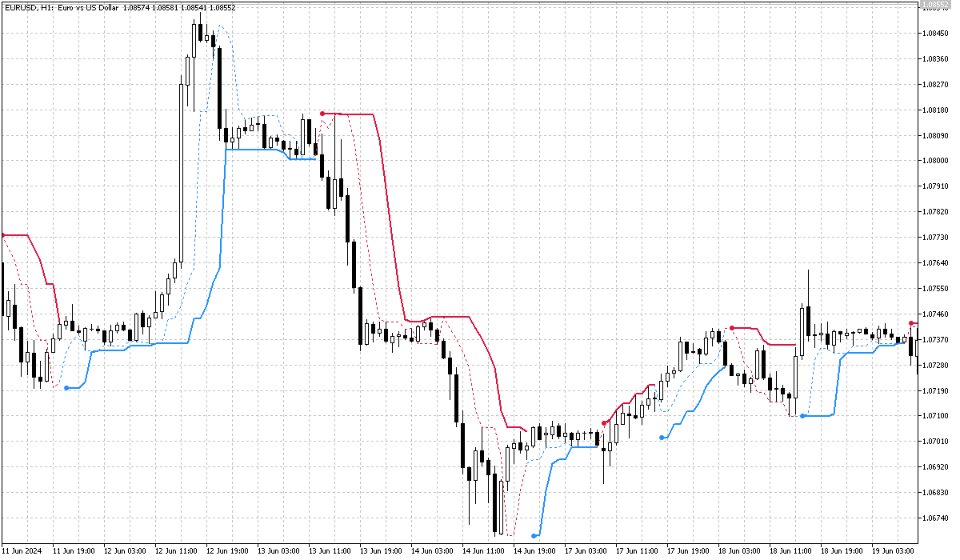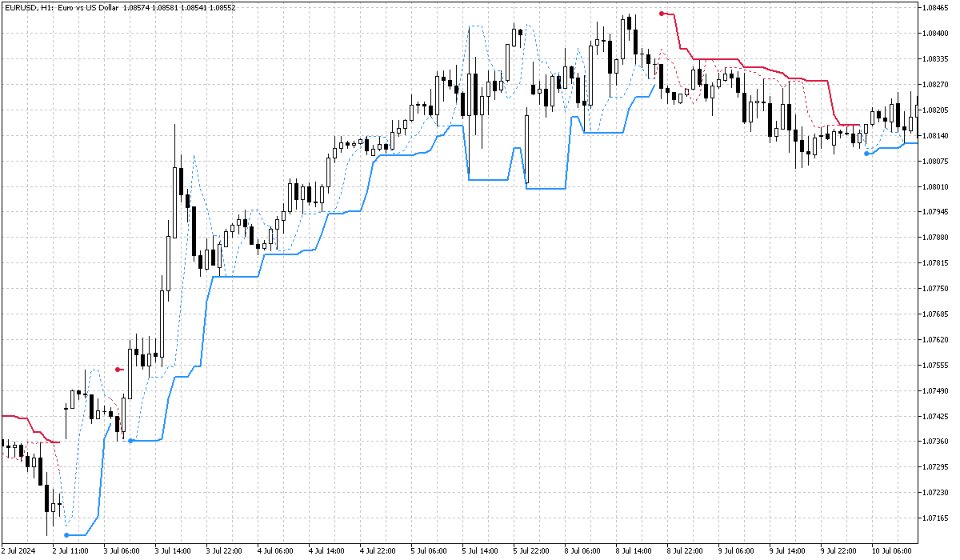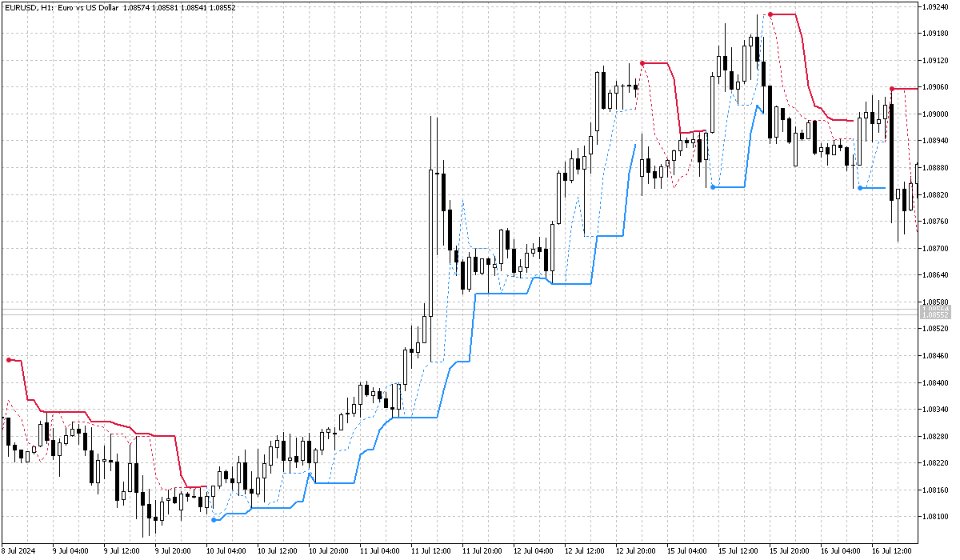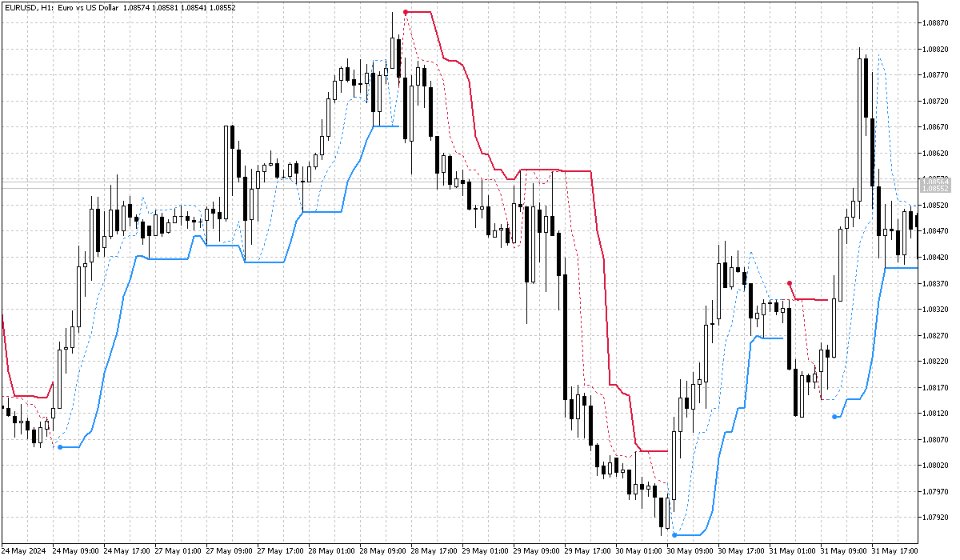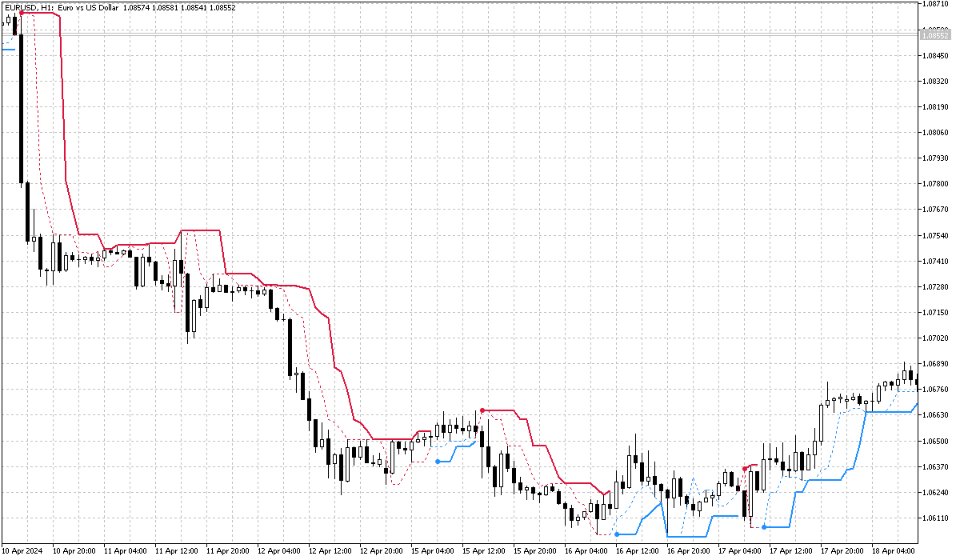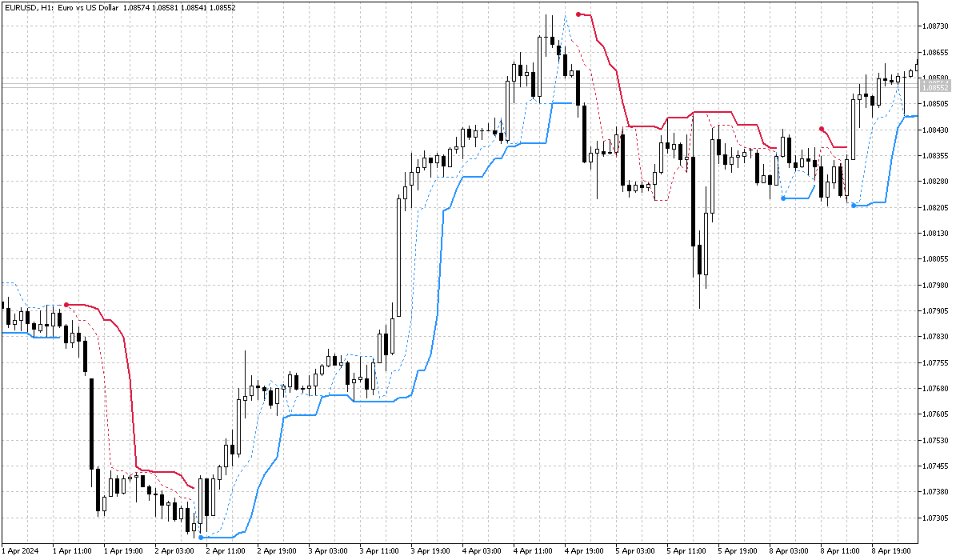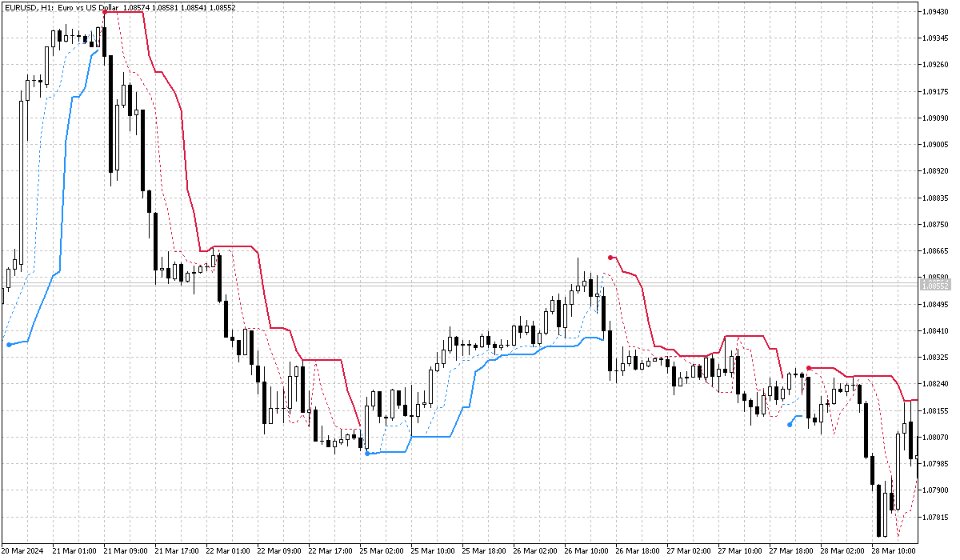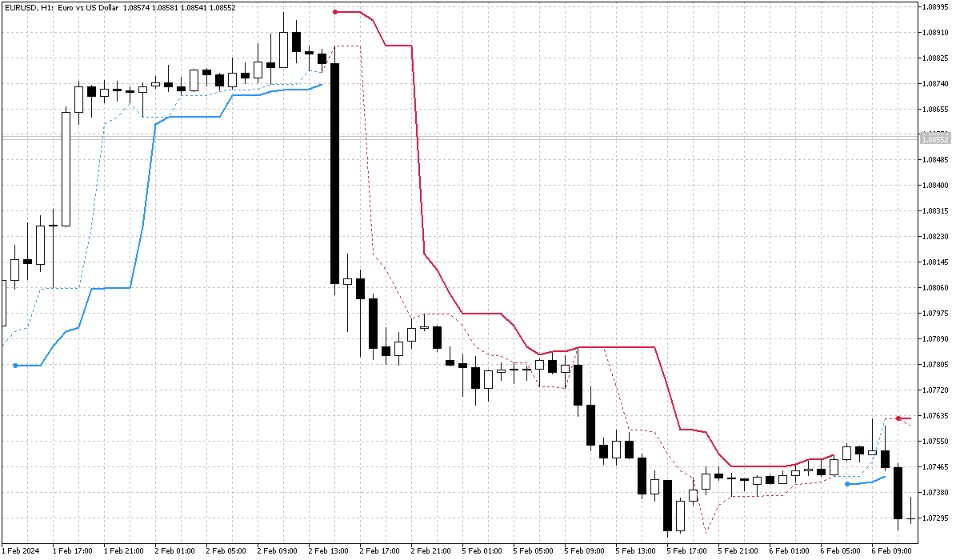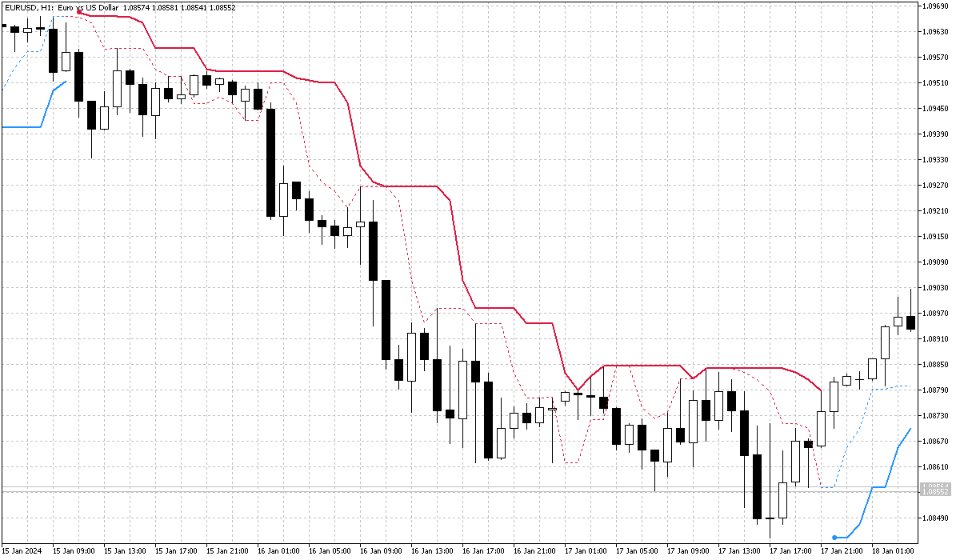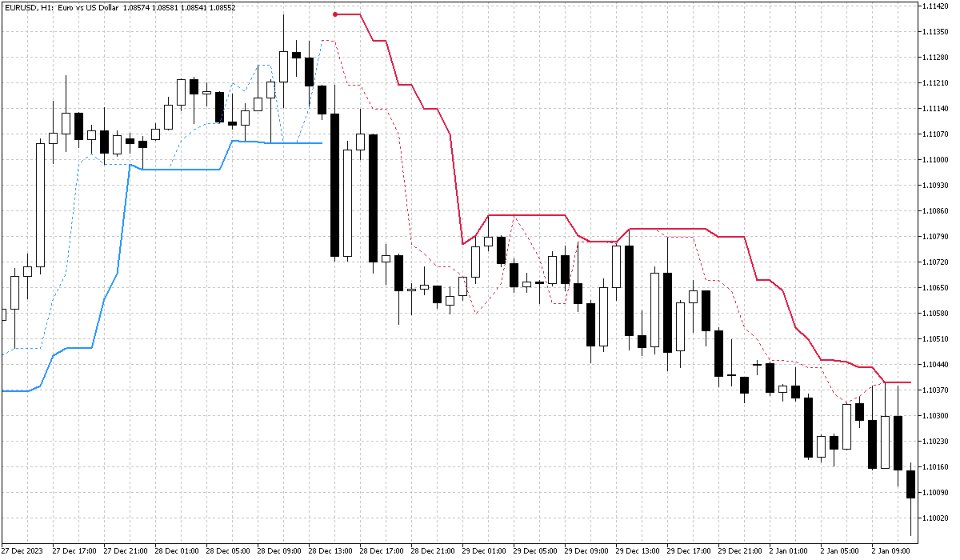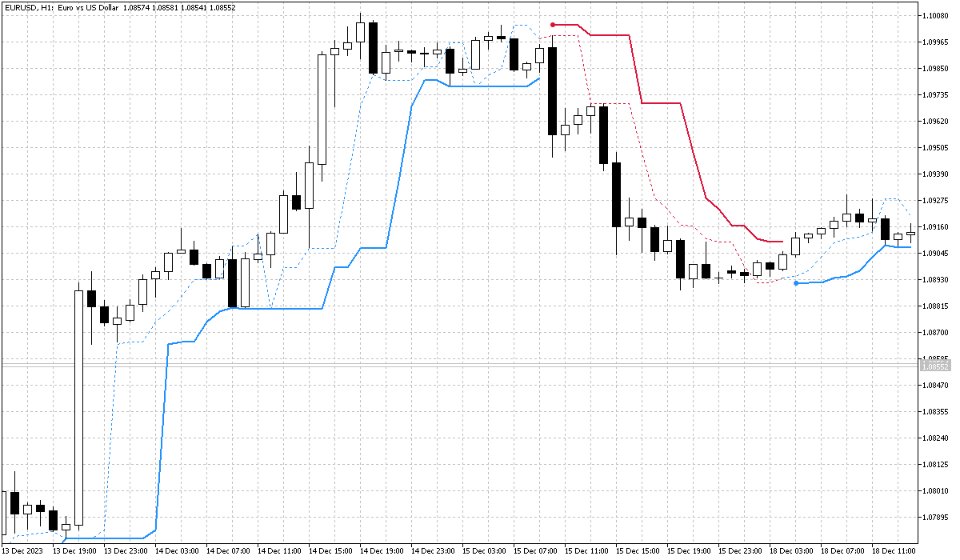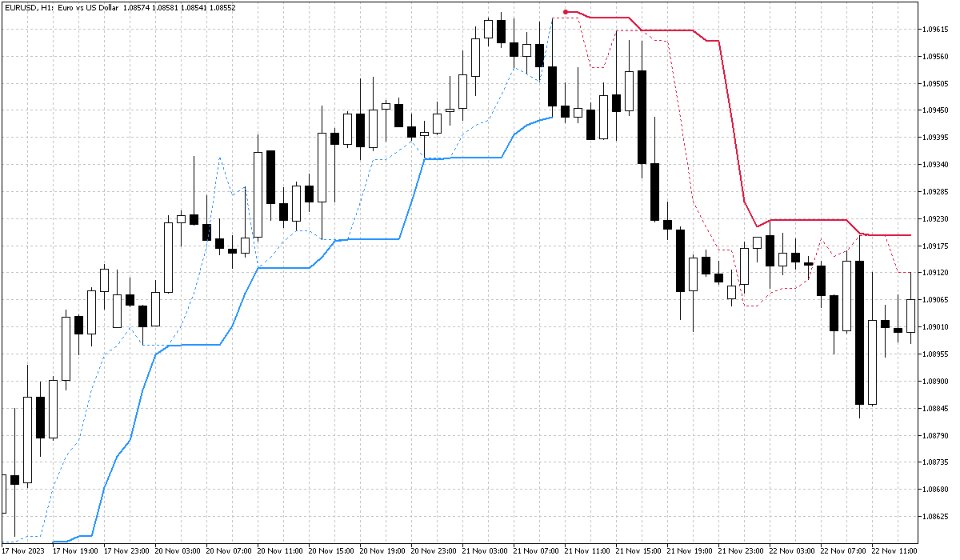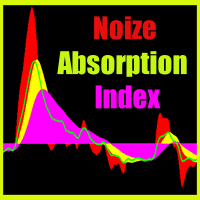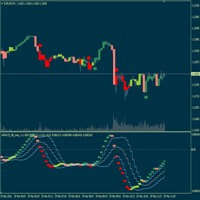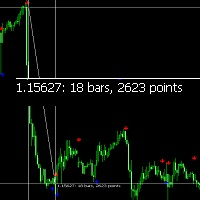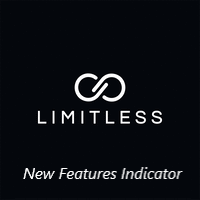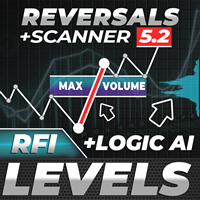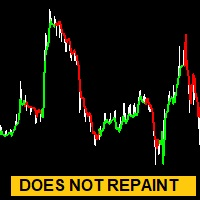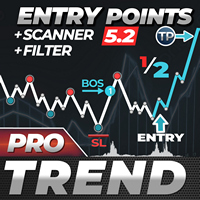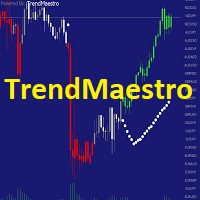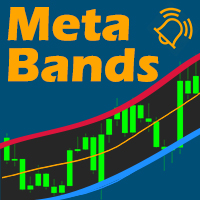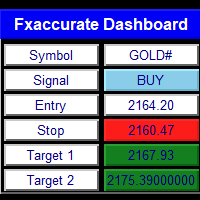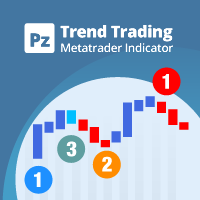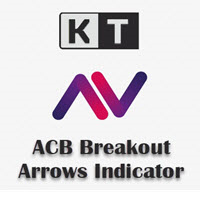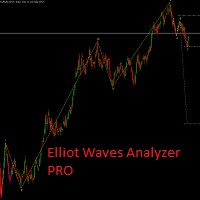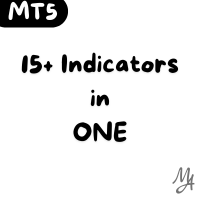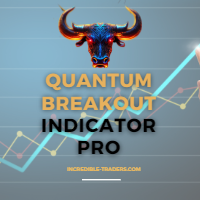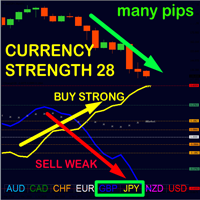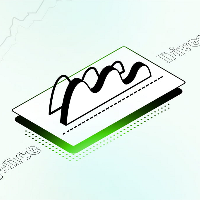Balanced Work
- Indicators
- Sabina Fik
- Version: 1.0
- Activations: 5
Balanced Work Indicator: Your Gateway to Trend Trading
Balanced Work is a trend-following indicator designed to simplify market analysis and trading decisions. This algorithmic tool draws two-colored dots along the price chart, connected by lines, offering a clear visual representation of market trends. The simplicity of this indicator lies in its color-coded signals: buy when a blue dot appears and sell when a red dot appears. It is particularly effective for scalping and pipsing, and it has proven to be a reliable tool for traders.
Key Features of Balanced Work
- Visual Clarity: The indicator uses blue and red dots to signal potential buying and selling points, respectively, making it easy for traders to follow the market's direction.
- Trend Analysis: Balanced Work excels at analyzing trend direction over specific time intervals, helping traders identify the prevailing market trend.
- Beginner-Friendly: This indicator is perfect for novice traders who are learning market dynamics with the help of trend-following tools.
Understanding Market Trends with Balanced Work
Types of Trends
- Bullish Trend: When the price moves upward, indicating a buying opportunity.
- Bearish Trend: When the price moves downward, signaling a selling opportunity.
- Sideways (Flat) Trend: When the price fluctuates within a narrow range, indicating market indecision.
Balanced Work helps traders detect these trends and their direction, allowing for timely and informed trading decisions.
Advantages of Using Balanced Work
- Early Trend Detection: The indicator effectively identifies the beginning and end of trends, as well as potential reversal points.
- Scalping and Pipsing: Ideal for short-term trading strategies, Balanced Work provides quick and actionable signals for entry and exit points.
- Comprehensive Market View: By using multiple trend indicators in conjunction, traders can get a more detailed and accurate picture of the market conditions.
Practical Applications of Balanced Work
Scalping with Balanced Work
- Setup: Apply Balanced Work on a short time frame, such as M5 or M15.
- Buy Signal: Enter a long position when a blue dot appears.
- Sell Signal: Enter a short position when a red dot appears.
- Exit Strategy: Use additional indicators or price action to determine the best exit points for maximizing profits.
Trend Following for Long-Term Trades
- Setup: Apply Balanced Work on a longer time frame, such as H1 or H4.
- Trend Confirmation: Use the dots to confirm the trend direction before making a trade.
- Position Management: Adjust your stop-loss and take-profit levels based on the indicator's signals and overall market analysis.
Maximizing the Use of Balanced Work
- Combine with Other Indicators: Enhance the reliability of your trading strategy by using Balanced Work alongside other technical indicators, such as moving averages or RSI.
- Adapt to Different Markets: While primarily used in the Forex market, Balanced Work can also be applied to stocks, commodities, and cryptocurrencies for broader trading opportunities.
- Regular Updates: Stay updated with the latest market news and events to ensure your trading strategy remains effective and aligned with current market conditions.
Conclusion
Balanced Work is a powerful and straightforward trend-following indicator that simplifies the trading process by providing clear, visual signals for buying and selling. Whether you are a beginner or an experienced trader, this tool can help you make more informed decisions and enhance your trading performance. Start using Balanced Work today and experience a more efficient and effective way to trade market trends.
Enhanced Content for Deeper Insights
Detailed Analysis of Trend Types
Understanding the nature of different market trends is crucial for effective trading. Balanced Work helps you identify:
- Bullish Trends: Characterized by higher highs and higher lows, indicating a strong buying interest.
- Bearish Trends: Marked by lower lows and lower highs, signaling a dominant selling pressure.
- Sideways Trends: Occur when the market lacks a clear direction, with prices oscillating within a range.
Using Balanced Work, traders can easily distinguish between these trends and adapt their strategies accordingly.
Real-World Trading Scenarios
To illustrate the practical application of Balanced Work, let's consider two scenarios:
-
EUR/USD on M15:
- Initial Setup: Apply Balanced Work on a 15-minute chart.
- Trade Execution: Enter a long trade on a blue dot and a short trade on a red dot.
- Exit Strategy: Use a combination of take-profit and stop-loss levels to manage the trade.
-
GBP/JPY on H1:
- Initial Setup: Apply Balanced Work on a 1-hour chart.
- Trend Confirmation: Ensure the trend is validated by the appearance of consecutive dots in the same color.
- Position Management: Adjust positions based on trend strength and market volatility.
Advanced Trading Techniques
- Combining with Volume Indicators: Use volume indicators to confirm the strength of signals provided by Balanced Work, enhancing the accuracy of your trades.
- Backtesting and Optimization: Regularly backtest the indicator on historical data to fine-tune settings and improve performance.
- Risk Management: Implement strict risk management rules to protect your capital and maximize returns.
Final Thoughts
Balanced Work is not just an indicator but a comprehensive tool for understanding and navigating market trends. Its simplicity, combined with powerful analytical capabilities, makes it an essential part of any trader's toolkit. Embrace Balanced Work today and take your trading to new heights by leveraging its clear signals and robust performance.

